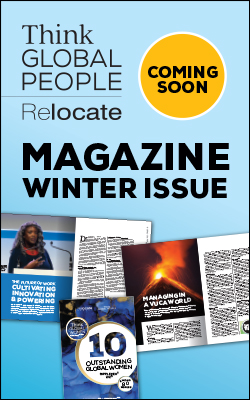Multinationals and globally mobile employees growing apace
New research from Finaccord shows, globally, the number of multinationals is growing, but the international mobility of their employees is increasing at an even faster pace.

Multinational companies growing rapidly
This is a key finding from a new study incorporating unique analysis from Finaccord, an international market research and consulting company, which is a division of Aon Inpoint, whose report Global Multinationals and Corporate Transferees: A Worldwide Review reveals that the number of multinationals worldwide is on course to reach 13,900 by 2021 while the number of employees who are classed as expatriate or corporate transferees will exceed 1 million.David Bowles, consultant at Finaccord, highlights some of the main trends identified by the report. “Smaller corporations turning over up to US$ 10 billion per annum account for the vast majority of all multinationals as they make up 94.6 per cent of the total in 2017.“Thus, ‘mega multinationals’ with annual revenues in excess of US$ 10 billion make up the residual 5.4 per cent. At a respective 18.3 per cent and 17.8 percent of all enterprises, the financial and retail/wholesale sectors produce the most multinationals, followed by manufacturing of consumer goods, at 9.3 percent.”Asia-Pacific creating bulk of globally mobile employees
Multinationals based in the Asia-Pacific region are producing the majority of 'global employees'. However, despite being relatively few in number, ‘mega multinationals’ are estimated to generate more than two thirds (67.1 per cent) of the total number of expatriates and other corporate transferees employed by multinationals.Mr Bowles continued, “Among all multinationals globally, our analysis indicates that enterprises in two sectors – namely, energy and power plus professional services – are particularly significant, and that corporate transferees are being generated most rapidly by enterprises based in the Asia-Pacific region.“In fact, the top five enterprises by this measure are all headquartered in the Asia-Pacific region: Tata Group employs the most such transferees followed by two other India-based enterprises, Infosys and Wipro, and then by the state-owned China National Petroleum and Taiwan-based manufacturing group Foxconn.“In total, there are likely to be more than 1 million expatriates and other corporate transferees employed by multinationals by 2021.” The number of these has been growing at a compound annual rate of over 4 per cent.Overall, there were a total of 12,230 multinational enterprises worldwide with revenues of at least US$ 200 million in 2017 and their number increased at a compound annual rate of 2.0 per cent between 2013 and 2017.Related stories:
- Boardrooms now recognising mobility as growth engine: study
- Overseas assignments see reports of critical incidents rise
- Expat destinations: which countries rank highest?
Number of expatriates continues to grow
There were around 838,600 expatriates and other corporate transferees employed by these multinationals in 2017 and, given a compound annual rate of 4.1 per cent since 2013, this number has been growing at a faster rate than the number of multinational enterprises as a result of the increasing trend for international mobility. The most rapid of which is medium-sized multinationals.“We defined the concept of a ‘multinational enterprise’ as comprising any for-profit organisation, including state-owned entities, that has had an annual revenue of at least US$ 200 million, that has substantial operations via subsidiaries and/or branches in at least one country outside the country of its headquarters, and that, in order to avoid double-counting, is not majority-owned by any other corporate entity,” Added Mr Bowles. “Although many enterprises operating in the technology, media and telecoms sector are growing at a relatively rapid rate in terms of their total revenues, they only make up 2.5 per cent of the total number of multinationals worldwide and are outnumbered by those from numerous other sectors including chemicals, energy and power, professional services and even general conglomerates, to name a few.” In addition, the research established that the fastest growth in the number of multinational enterprises is occurring among those with annual revenues of between US$ 1 billion and US$ 10 billion, and the majority of them are headquartered in Africa or the Asia-Pacific region (especially China).In contrast, it is likely that the number of multinational enterprises with revenues of over US$ 20 billion has fallen slightly in recent years, a trend that can be attributed to mergers and acquisitions as well as individual company performance.Looking ahead, Finaccord calculates that the rate of growth in the number of multinational enterprises worldwide is likely to be 3.2 per cent between 2017 and 2021, resulting in a total of almost 13,900 by 2021.Media contact: Amandas Ong, +44 (0)20 3178 2556, aong@finaccord.comFor related news and features, visit our International Assignments section. Look out for the launch of 2018's Relocate Awards. Entry opens in January. Relocate’s new Global Mobility Toolkit provides free information, practical advice and support for HR, global mobility managers and global teams operating overseas. Access hundreds of global services and suppliers in our Online Directory
Access hundreds of global services and suppliers in our Online Directory
©2025 Re:locate magazine, published by Profile Locations, Spray Hill, Hastings Road, Lamberhurst, Kent TN3 8JB. All rights reserved. This publication (or any part thereof) may not be reproduced in any form without the prior written permission of Profile Locations. Profile Locations accepts no liability for the accuracy of the contents or any opinions expressed herein.






































